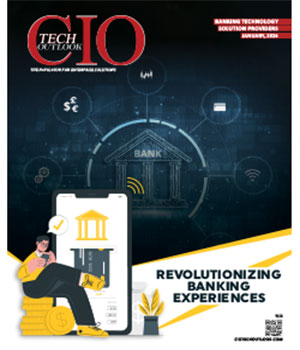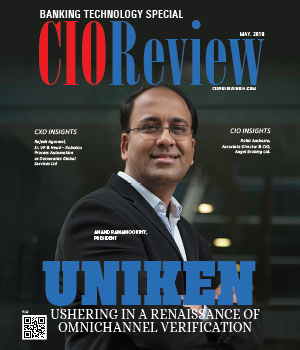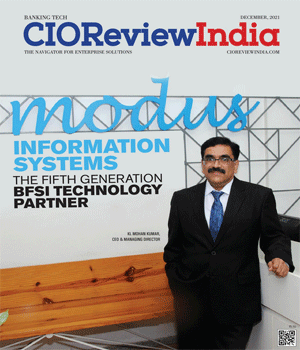
Cloud Computing - New-Age Mantra for Business
Zack Bishop, EVP & CIO, Renasant Bank [NASDAQ:RNS] | Wednesday, 11 October 2017, 06:22 IST
 Is the corporate owned data center a thing of the past?
Is the corporate owned data center a thing of the past?
With every company in the technology space heavily incenting their sales associates for those products that create the most repetitive profit, our ability to find relevant unbiased information around the construction of a data center in today’s world was a challenge, so I decided to share my experience.
The “Cloud” has matured since a marketing division somewhere, a decade ago; renamed “hosting” to the buzzword of “cloud computing” and now “The Cloud” is a household name in both the consumer and commercial space.
However, what is it, and what value does it provide to a large enterprise? Does it replace in entirety the legacy data centers large organizations have had since the 1960’s?
My answer is maybe, but that maybe is based on numerous assumptions.
A few years back, when we outgrew our data center, the simple process of beginning to design a new data center, became a financial planning analysis of comparative options. Do you expand the existing data center, build a new data center, utilize a co-location provider, move to a private cloud, or even public cloud for some situations? You also have to consider a hybrid approach of two or more of the options that exist.
The first thing we asked ourselves was this: Do we have the appropriate internal resources to manage the environment? Will we retain those associates? Are we in a location where we can recruit those associates if needed?
If the answer is “Skilled dedicated employees are not a problem” then now you have options. If the answer is no, then skip the remainder of the article and begin your cloud journey.
The associates are the most important part to this puzzle. There is nothing more frustrating than living the life of Support Tickets, Service Level Agreements and escalations and passing these on to someone else who may or may not add value. Of course, there are some extremely reputable companies out there who strive for perfection; however, it’s not necessarily the norm. My mission critical systems (in my opinion) are more important than everyone else’s mission critical systems, and sometimes we need to control our own destiny.
The next step once, you validate your skilled associates, is a financial plan, and I am assuming, once you complete this exercise you will be in the same position that we were in. Technology leaders are fortunate that the majority of the data center infrastructure is very much commoditized, so if you have a decent spend, the chances of you negotiating equivalent pricing with larger cloud providers is high. In addition, in this situation, where spend is equal, what decision will you make?
Breaking Down the Financials
For the purpose of even numbers, let us say you have a need for 100 racks, which is give or take 3,000-4,000 servers. If the typical rack consumes around 10KW of power, you are looking at close to a Megawatt of total power. Assuming you own the land, you will have fortified building construction expense, generators, UPS systems, fire suppressant and the list goes on and on. If you could do all of this for 8 +/- Millions after a mixture of 15 and 30 years depreciations your monthly expense would be around $30,000 +/-. Another way to look at it is $300 +/- per month per rack (which excludes maintenance and recurring operational expenses). Add back in the total value of that cash during the depreciation time and you will be in the $500 +/- per month per rack range.
Sure, you have random stuff missing, and a vendor who resales competitive products will challenge these numbers down to the penny. However, for a quick approach at comparison costs, the above numbers are going to be close.
So how big is this building? The building space, which will house the servers, will be approximately 2,500-3,000 ft. Some say 20 sq. ft. per rack is acceptable. I would lean more towards 30 sq. ft., but the above estimates do not consider anything more than the minimal requirements. You have to consider how much room cooling will consume. Different cooling approaches will consume different amounts of space. What about electrical, staging areas, carrier room, loading docks etc. You can quickly move that total expense upwards based on decisions.
Comparing Alternatives
Cloud computing is a challenge to compare. The partner you are working with will be more than happy to show you an ROI that is priced based on network, compute, storage, and support. However, since these items are never static in the real world, defining a baseline is virtually impossible. You have to look at a current annual expense vs proposed annual expense. The above annual expense number of $360,000 does not consider the actual servers in the data center, the maintenance on that equipment, and any additional support agreements that may be in play.
Co-locations facilities are easier to compare. The co-lo facility will handle power and cooling, install a fence around your rented space and send you a bill each month. With this scenario you can control your own destiny, and not have to deal with data center management. Typical pricing is going to be volume based. You can expect to pay $200-$300 per month, per rack. Therefore, it is slightly less expensive in most cases in comparison to building your own.
We decided as an organization that a hybrid approach was the best choice for us. We fully embrace cloud computing where it makes sense; we constructed a data center on site for mission critical systems, and entered into a co-location agreement for disaster recovery.
After an extensive RFP process, we choose Century Construction out of Tupelo Mississippi for data center construction and engineering, and T5 data centers for co-location.
We have been very happy with our decisions and continue to provide impressive top tier service and security to our customers and associates.
CIO Viewpoint
Machine Learning In Cybersecurity: The Risks &...
By Neelesh Kripalani, Chief Technology Officer, Clover Infotech
5 Major Saas Trends To Check-Out In 2021
By Vikas Bhonsle, CEO, Crayon Software Experts India
Artificial Intelligence & The Disruptive Chatbot
By Vishal Sinha, President & CIO, Tranzlease Holdings
CXO Insights
Crafting the Digital Journey in Banking
By Janifha Evangeline
Incorporating Blockchain Capabilities into...




.jpg)
.jpg)





